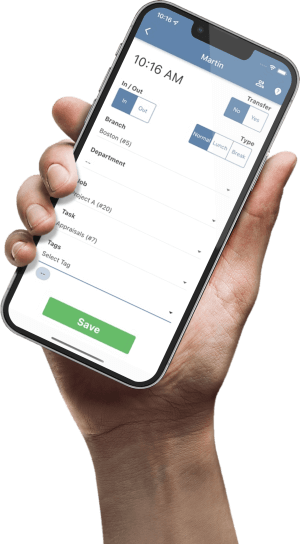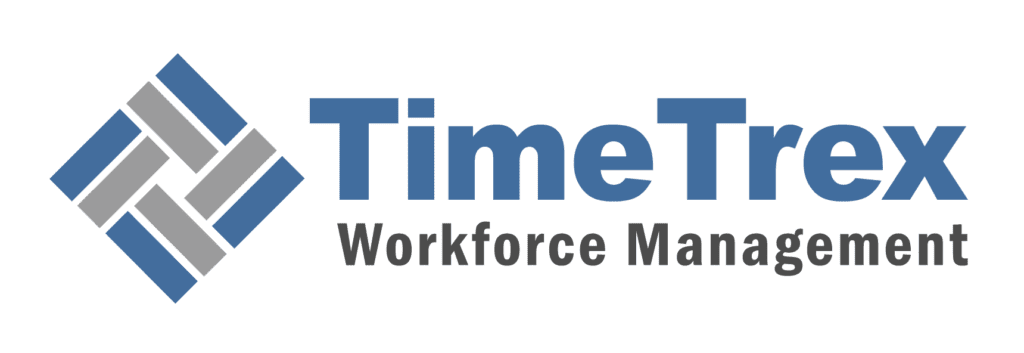
The Employer's Guide to Preventing Employee Punch Fraud and Time Theft
A comprehensive analysis of employee time theft, its impact on businesses, and how a modern workforce management system like TimeTrex can provide a strategic defense. Learn to protect your business from employee fraud, buddy punching, and ghost employee schemes with powerful time tracking and biometric solutions.
Table of Contents
- TL:DR: The Strategic Imperative of Proactive Workforce Management
- The Pervasive Landscape of Workforce Time Theft
- Case Studies in Fraud: An Analysis of Systemic Vulnerabilities
- TimeTrex: A Strategic Countermeasure to Time Fraud
- Implementation and Return on Investment (ROI)
- Conclusion: A New Standard for Workforce Accountability
TL:DR: The Strategic Imperative of Proactive Workforce Management
The financial and operational integrity of any organization, whether private or public, is under constant threat from internal vulnerabilities. A deep-dive analysis of real-world cases of time and attendance fraud reveals a clear pattern: such theft is not a random act of dishonesty but a predictable outcome of systemic weaknesses. Outdated, manual timekeeping processes, a lack of robust internal controls, and insufficient oversight create an environment ripe for exploitation. These deficiencies allow fraudulent practices to take root, leading to substantial financial losses, regulatory non-compliance, and a damaging erosion of organizational trust.
This report establishes that the Parana, Brazil case, while chronic and decades-long, is not an isolated incident but a powerful illustration of a widespread problem. A comparative analysis of this and other high-profile cases, including fraud against the U.S. Department of Defense and a multi-million-dollar ghost employee scheme, demonstrates that the scale of fraud is directly proportional to the level of unchecked control granted to the perpetrator. The most effective countermeasure is a strategic shift from passive record-keeping to proactive, technology-driven workforce management. An integrated system, such as TimeTrex, provides a comprehensive solution by addressing the root causes of fraud through verifiable data, automated workflows, and intelligent reporting. This transformation from a system based on trust to one based on verifiable data is no longer a luxury but a strategic imperative for modern organizations seeking to mitigate risk, ensure accountability, and protect their bottom line.
The Pervasive Landscape of Workforce Time Theft
A Taxonomy of Modern Fraud: Defining the Challenge
Workforce time theft is a significant drain on organizational resources, manifesting in a variety of forms that exploit systemic weaknesses. One of the most common and costly types is buddy punching, defined as the act of one employee clocking in or out on behalf of a coworker to conceal late arrivals, early departures, or outright absenteeism. This practice is particularly prevalent in environments that rely on outdated, easily manipulated systems such as paper timesheets, shared PINs, or physical ID cards and badges, which lack any mechanism for identity verification.
A more sophisticated and financially devastating form of fraud is the ghost employee scheme. This white-collar crime involves a dishonest individual adding a fictitious or non-existent person to the payroll to divert salaries, benefits, and overtime payments into their own accounts or those of an accomplice. This type of fraud is often enabled by a single individual holding unchecked control over critical HR and payroll functions, allowing them to manipulate records and add unverified personnel to the system.
Finally, falsified hours and overtime represents another pervasive category of time theft. Employees can inflate their reported work hours, take unauthorized extended breaks, or claim overtime pay that was never worked or approved. The research materials reveal that such fraud is often facilitated by a lack of oversight and inadequate internal controls, as seen in the Department of Defense case where employees were able to fraudulently modify timesheets after they had been approved by a supervisor.
The Financial and Operational Toll: Quantifying the Impact
The consequences of time theft are far-reaching, extending from direct financial losses to a corrosive impact on company culture and morale. The financial toll is staggering. Research from the American Payroll Association indicates that buddy punching alone affects 75% of U.S. businesses and costs employers over $370 million annually. For individual businesses, time theft can inflate payroll costs by as much as 7%. Beyond direct wage payments for unworked hours, the cost can be compounded by immense regulatory fines.
The damage, however, is not limited to financial metrics. The prevalence of time theft can have a significant and detrimental effect on an organization's work environment. When honest and diligent employees see their colleagues getting away with fraudulent practices, it creates a feeling of unfairness and can lead to resentment and a decline in morale. This can foster a culture where dishonesty is tolerated and can ultimately lead to a disengaged workforce, which may even rationalize time theft as a form of protest against an employer they perceive as unfair. This highlights a fundamental principle: time theft is not a random act of dishonesty but a symptom of systemic and cultural vulnerabilities. The problem is often enabled by outdated, easily exploited systems, which, when combined with a lack of clear policies and oversight, create a cascade of negative effects that a purely technological solution cannot fully address in isolation.
The scope of the problem is proportional to the perpetrator's level of administrative access. While widespread "punch fraud" is a costly and frequent issue, a company’s greatest financial risk can come from high-level, internal threats that exploit a complete lack of segregation of duties. For example, a CFO's ghost employee scheme, where over $1.3 million was stolen, demonstrates that concentrating too much power in a single role can lead to a single, catastrophic financial loss. This contrasts with the chronic, lower-value theft of punch fraud, which costs the organization through repetition.
Case Studies in Fraud: An Analysis of Systemic Vulnerabilities
The following case studies illustrate how different forms of time fraud exploit a common set of systemic vulnerabilities, often enabled by outdated technology and inadequate oversight.
The Parana, Brazil Public Servant: A Case of Chronic Exploitation
The Parana, Brazil case is a textbook example of long-term fraud enabled by a profound failure of oversight. A city employee was able to defraud the city for 26 years by clocking in and out of work in under two minutes, without ever performing the work for which he was paid. The sheer longevity of this scheme reveals a system that was either entirely manual and unaudited or used a primitive, easily circumvented punch clock. The core vulnerability was the absence of a mechanism to verify the employee's physical presence or authenticate his identity at the moment of the punch. This type of fraud, where an individual can effectively "punch" a card and then disappear, is a direct result of relying on a timekeeping system that accepts a credential without linking it to the physical person. Read more about this case and see video footage in this News.com.au article and video.
The U.S. Department of Defense: A Lesson in Inadequate Controls
A case involving three Department of Defense (DoD) employees provides a clear blueprint for the breakdown of internal controls. These employees pleaded guilty to defrauding the government of over $35,000 each by submitting false overtime claims. An audit revealed a laundry list of procedural failures: more than half of the timesheets reviewed were missing a required signature from an authorizing official, and supervisors were returning approved timesheets to employees, who would then fraudulently modify them. Additionally, the auditors found that some employees were paid overtime for work that was never pre-authorized or documented. The employees themselves admitted they took advantage of a weak internal control system and the fact that supervisors were too busy to review timesheets for accuracy. This case demonstrates that even with a policy for timesheet approval, a lack of strict, automated enforcement and a human-centric workflow can introduce significant risks. You can read the official government report in the DoD Inspector General case study.
The Corrupt CFO and the Ghost Employee Scheme: An Internal Threat
A forensic investigation into a company’s payroll revealed a sophisticated ghost employee scheme orchestrated by the Chief Financial Officer (CFO). The CFO was found to have misappropriated more than $1.3 million over multiple years by adding two family members to the payroll. The fraud was only discovered when the CFO went on medical leave and a new individual took over their responsibilities. The investigation found that the fraudulent "employees" had no personnel files, were receiving bonuses far exceeding their counterparts, and were covered by the CFO's health insurance. The central vulnerability was a complete lack of segregation of duties. The CFO had total, unchallenged control over adding new hires and processing payroll, allowing them to bypass any and all checks and balances. For an in-depth look at the forensic investigation, see this case study from a forensic accounting firm.
Additional Examples of Time Fraud
Employee punch fraud isn't limited to a few isolated cases. Here are more real-world examples that highlight the diverse tactics used and the significant financial losses organizations face:
- A New York City Port Foreman: A foreman at a major New Jersey port facility was accused of getting co-workers to file fake timesheets so he could collect more than $500,000 a year while spending time on his yacht, traveling to Aruba, and going to movies instead of working. This fraud was enabled by a lack of oversight and a system of trust that was easily abused. You can find more details in this AP News report.
- A Rockland, Massachusetts Construction Company: A construction company and its executives were ordered to pay over $300,000 in penalties for submitting falsified payroll records on publicly funded playground projects. They failed to pay employees the required prevailing wage and overtime, misrepresenting the hours worked. This was a classic case of wage and time theft enabled by fraudulent documents. Read the official announcement from the Massachusetts Attorney General's Office.
- A National Retail Chain Manager: In one example, a salaried manager for a large retail chain was reported for "time theft" by a former employee. The manager was expected to be in the store for a minimum of 40 hours per week, but security footage proved she was regularly absent for significant periods. This highlights how time theft can occur even with salaried employees. A discussion on Reddit details the incident and the vulnerabilities in management oversight.
- A Framingham, Massachusetts Construction Company: Another Massachusetts construction company, BPI Construction Management, was ordered to pay nearly $1 million after its subcontractor failed to pay prevailing wages and submitted 32 fraudulent payroll forms. A court found that BPI had acted with "reckless disregard" by not verifying the payroll information, underscoring the legal risks of a "trust-based" system. You can read about the court's decision on the official Mass.gov website.
TimeTrex: A Strategic Countermeasure to Time Fraud
An integrated workforce management system represents a fundamental paradigm shift from a reactive, manual approach to a proactive, technology-driven one. TimeTrex's strategic value lies in its comprehensive platform that integrates time and attendance, payroll, and HR management into a single, unified database. This "single source of truth" eliminates the data silos and manual data entry that are the primary sources of error and fraud. For an overview of how it works, see the TimeTrex features page.
Mapping TimeTrex Features to Case Study Vulnerabilities
The following table provides a direct correlation between the vulnerabilities identified in the case studies and the specific TimeTrex features designed to remediate them.
| Case Study & Vulnerability | TimeTrex Solution | Mechanism of Prevention |
|---|---|---|
| Parana, Brazil Public Servant: Lack of identity verification and physical presence. | Biometric Facial Recognition & Geofencing | The system verifies an employee's unique identity at the point of punch, making it impossible for another individual to clock in. Geofencing ensures the punch is only valid from a designated physical location, preventing the employee from simply punching and leaving. |
| U.S. Department of Defense: Inadequate internal controls, lack of timesheet sign-off, and unapproved overtime. | Automated Workflows & Overtime Rules | TimeTrex can be configured to require supervisor approval before a timesheet is finalized. The system generates immutable audit trails that prevent fraudulent modifications after approval. It also enforces pre-authorization and sends proactive alerts for overtime, ensuring compliance with labor laws. |
| Corrupt CFO Ghost Employee: Lack of segregation of duties and unverified personnel records. | Integrated HR & Payroll | By unifying HR and payroll, the system ensures that a new employee cannot be added to the payroll without a corresponding, verified profile in the HR module. This inherent separation of duties prevents the kind of unchecked administrative fraud seen in the CFO case. |
Proactive Detection and Intelligent Reporting
Beyond its preventative capabilities, TimeTrex provides a powerful data-driven framework for proactive fraud detection. The system generates an Exception Summary Report that highlights deviations or irregularities in attendance records, such as missed punches, late arrivals, extended breaks, and suspicious overtime patterns. This moves managers from a reactive, manual oversight model to a proactive, automated one. You can learn more about this by checking out the TimeTrex Exception Summary Report HelpDocs.
Managers and HR professionals also have access to real-time dashboards that provide up-to-the-minute attendance data. This "bird's-eye view" provides a level of workforce visibility that is impossible with manual or disparate systems. These features allow for the continuous monitoring of timekeeping, enabling organizations to identify anomalies and address potential issues before they escalate into significant financial losses. Read more about Employee Self-Service and its role in modern workforce management.
Implementation and Return on Investment (ROI)
Strategic Considerations for Deployment
For a large enterprise or government agency, the deployment of a new workforce management system requires careful consideration. TimeTrex offers flexible deployment options, including both cloud-based and on-premise solutions, to meet diverse security requirements and data sovereignty mandates. This adaptability is particularly crucial for public sector entities with stringent data security protocols. The system is engineered to ensure unwavering compliance with federal, state, and local labor laws, including the Fair Labor Standards Act (FLSA), and is built to be a secure, multi-tenant cloud solution with automatic updates. A fundamental architectural choice by TimeTrex is the conversion of facial data into "secure algorithms, stored as encrypted digital codes, and not as photographic images," which is a critical privacy-enhancing technique to ensure compliance with regulations like Illinois' Biometric Information Privacy Act (BIPA). The platform is also designed to be highly scalable, capable of serving a small local government or a large federal agency. You can find more information about TimeTrex for Government Agencies on the website.
Quantifying the ROI of a Robust System
The return on investment (ROI) of a robust time and attendance system goes far beyond the simple cost of the software. A strategic ROI calculation must account for the following:
| ROI Component | Explanation |
|---|---|
| Direct Cost Savings | This includes the direct reduction in payroll costs from the elimination of time theft, fraudulent overtime, and ghost employees. It also includes the avoidance of costly regulatory fines and legal penalties. |
| Operational Efficiency | Automation of time capture and payroll reconciliation significantly reduces the administrative burden on HR and management teams, freeing up valuable time that was previously spent on manual data entry and error correction. |
| Strategic Value | A system that ensures accountability and compliance builds a more resilient and trustworthy organization. It protects against reputational damage and legal risk while fostering a culture of fairness and integrity that can improve employee morale and productivity. |
The cost of specialized biometric hardware was historically a deterrent for many organizations. TimeTrex’s innovation of transforming "affordable, off-the-shelf tablets or phones into cutting-edge biometric facial recognition timeclocks" makes this advanced technology accessible to businesses of all sizes. This approach democratizes fraud prevention, making a robust, secure system more widely available while simultaneously making it exponentially more difficult for employees to commit time theft. Learn more about the Facial Recognition Time Clock & Attendance System.
Conclusion: A New Standard for Workforce Accountability
The analysis of real-world fraud cases reveals a critical truth: time theft is not a matter of if, but when. The Parana, Brazil case and other similar instances demonstrate that relying on outdated systems and manual processes is a profound and costly vulnerability. The solution to human error is automation; the solution to human fraud is identity verification. An integrated, technology-driven workforce management system provides the foundation for a new standard of accountability.
The strategic recommendations derived from this analysis are clear: organizations must implement a solution that provides robust identity and location verification, automates critical workflows, and offers proactive, data-driven insights. By deploying a system like TimeTrex, which combines facial recognition, geofencing, automated timesheet approvals, and integrated HR and payroll functions, an organization can:
- Prevent Fraud: Eliminate buddy punching and ghost employee schemes by ensuring that every punch is tied to a verified identity and location.
- Ensure Compliance: Automate labor law compliance and track all actions with immutable audit trails.
- Increase Efficiency: Reduce administrative burden and free up management to focus on strategic initiatives rather than manual data entry and oversight.
The transition to an integrated workforce management platform is not merely a technological upgrade. It is a strategic decision to build a more secure, efficient, and transparent organization. It is a proactive step toward mitigating risk, fostering a culture of integrity, and ensuring that every hour worked is an hour truly earned.
Explore TimeTrex for Your BusinessDisclaimer: The content provided on this webpage is for informational purposes only and is not intended to be a substitute for professional advice. While we strive to ensure the accuracy and timeliness of the information presented here, the details may change over time or vary in different jurisdictions. Therefore, we do not guarantee the completeness, reliability, or absolute accuracy of this information. The information on this page should not be used as a basis for making legal, financial, or any other key decisions. We strongly advise consulting with a qualified professional or expert in the relevant field for specific advice, guidance, or services. By using this webpage, you acknowledge that the information is offered “as is” and that we are not liable for any errors, omissions, or inaccuracies in the content, nor for any actions taken based on the information provided. We shall not be held liable for any direct, indirect, incidental, consequential, or punitive damages arising out of your access to, use of, or reliance on any content on this page.
About The Author

Roger Wood
With a Baccalaureate of Science and advanced studies in business, Roger has successfully managed businesses across five continents. His extensive global experience and strategic insights contribute significantly to the success of TimeTrex. His expertise and dedication ensure we deliver top-notch solutions to our clients around the world.
Time To Clock-In
Start your 30-day free trial!
Experience the Ultimate Workforce Solution and Revolutionize Your Business Today
- Eliminate Errors
- Simple & Easy To Use
- Real-time Reporting

Saving businesses time and money through better workforce management since 2003.
Copyright © 2025 TimeTrex. All Rights Reserved.
